The document discusses several key concepts related to the Fourier transform:
1) It introduces the Dirac delta function and explains how it relates to the Fourier transform of exponential and cosine functions.
2) It describes several theorems regarding how the Fourier transform is affected by scaling, shifting, summing and differentiating functions.
3) It explains that both the intensity and phase of a time domain function, and the spectral intensity and phase in the frequency domain, are needed to fully characterize the function and its Fourier transform.
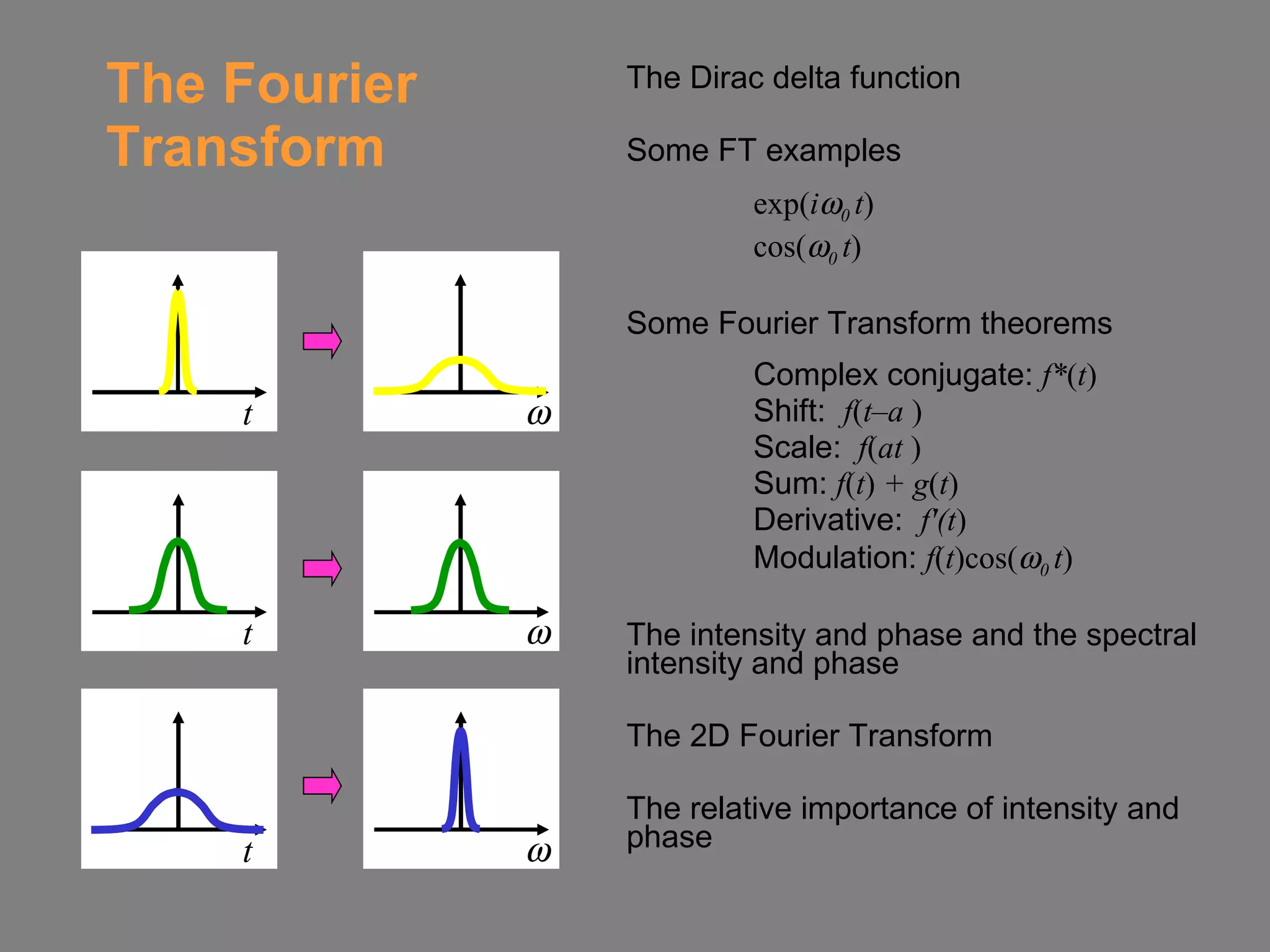
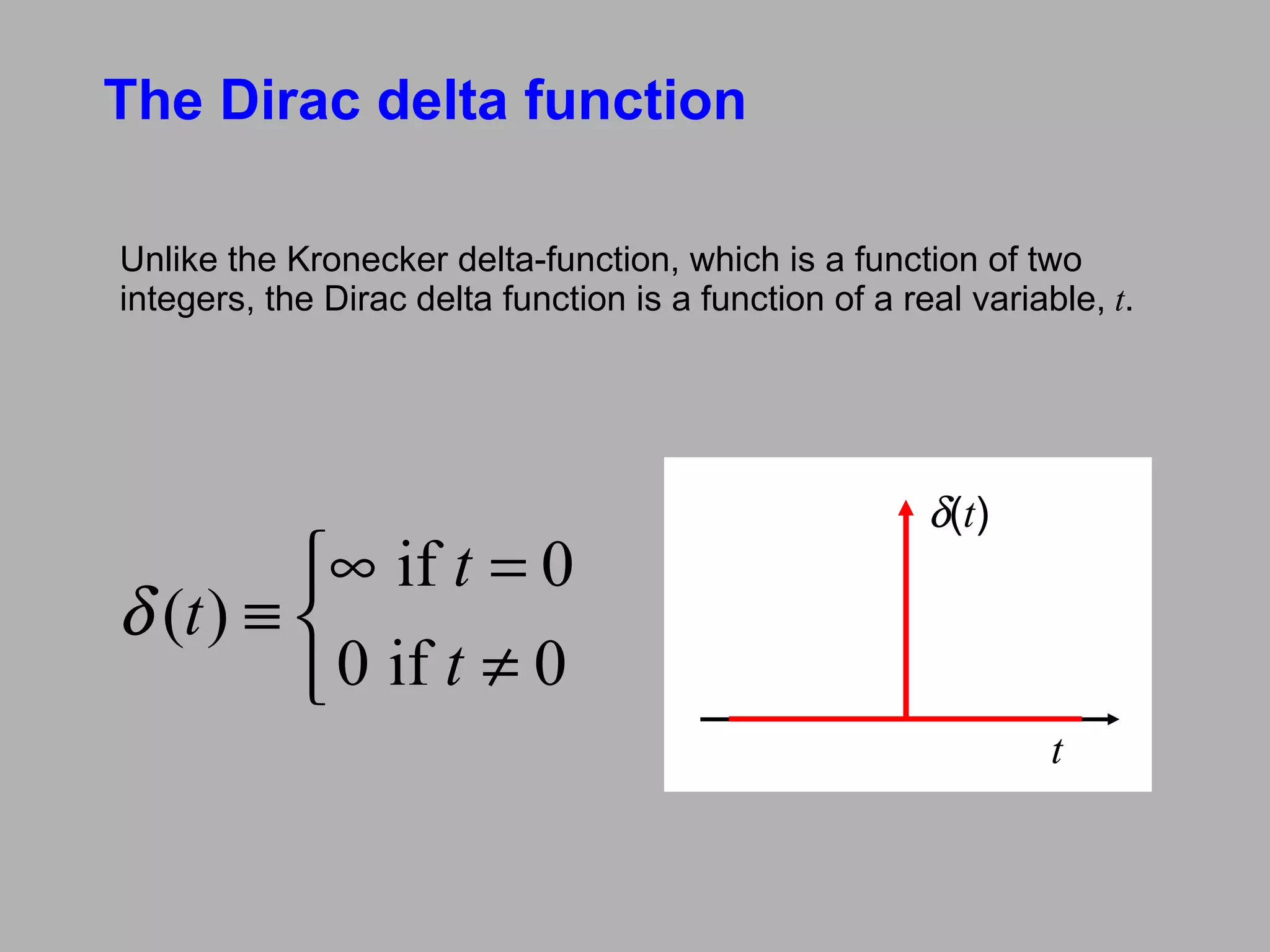
![The Dirac delta function It’s best to think of the delta function as the limit of a series of peaked continuous functions. t f 1 ( t ) f m ( t ) = m exp[-( mt ) 2 ]/√ f 2 ( t ) f 3 ( t ) ( t )](https://image.slidesharecdn.com/opticsfouriertransformii-091126134936-phpapp01/75/Optics-Fourier-Transform-Ii-3-2048.jpg)
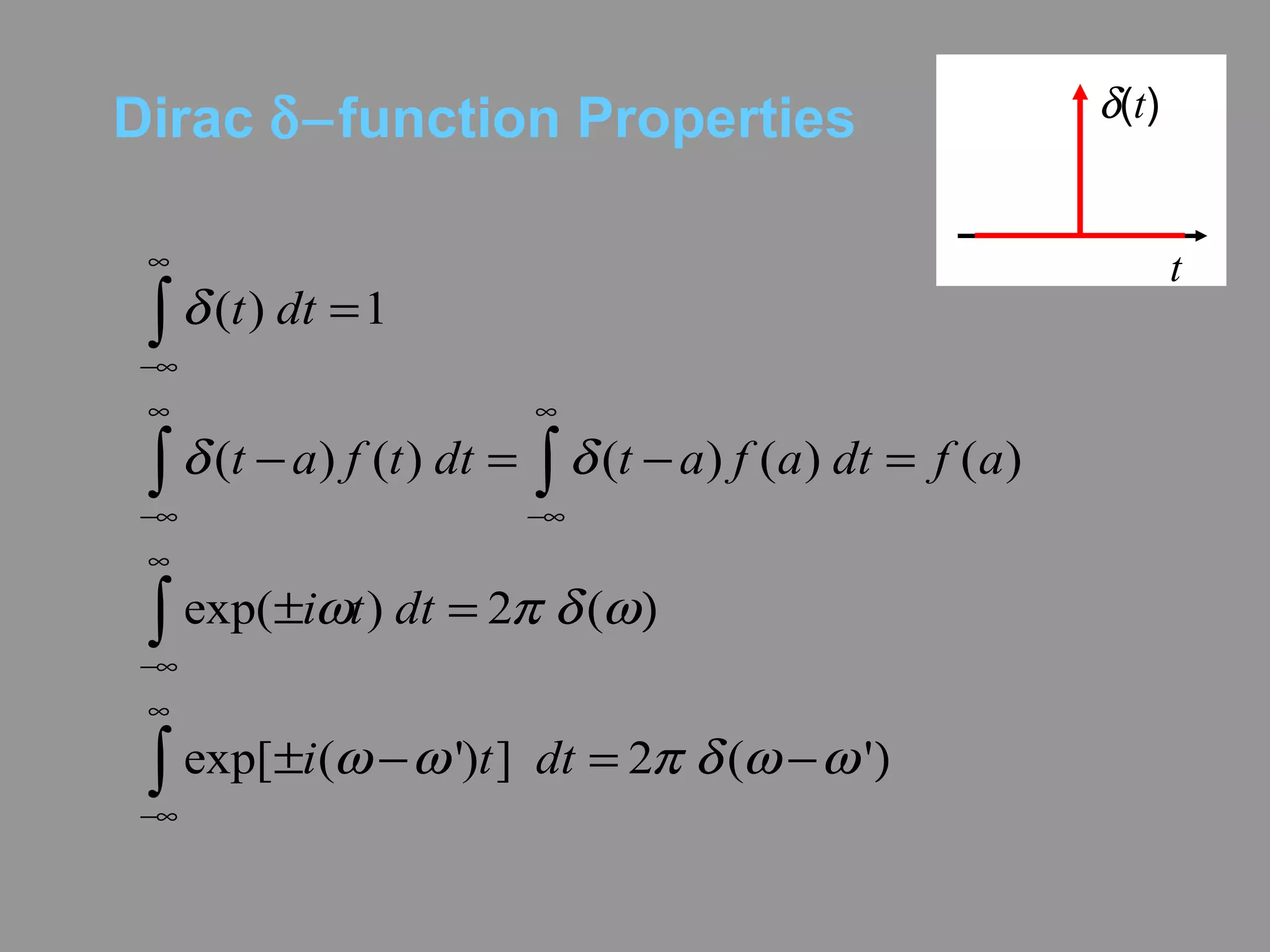
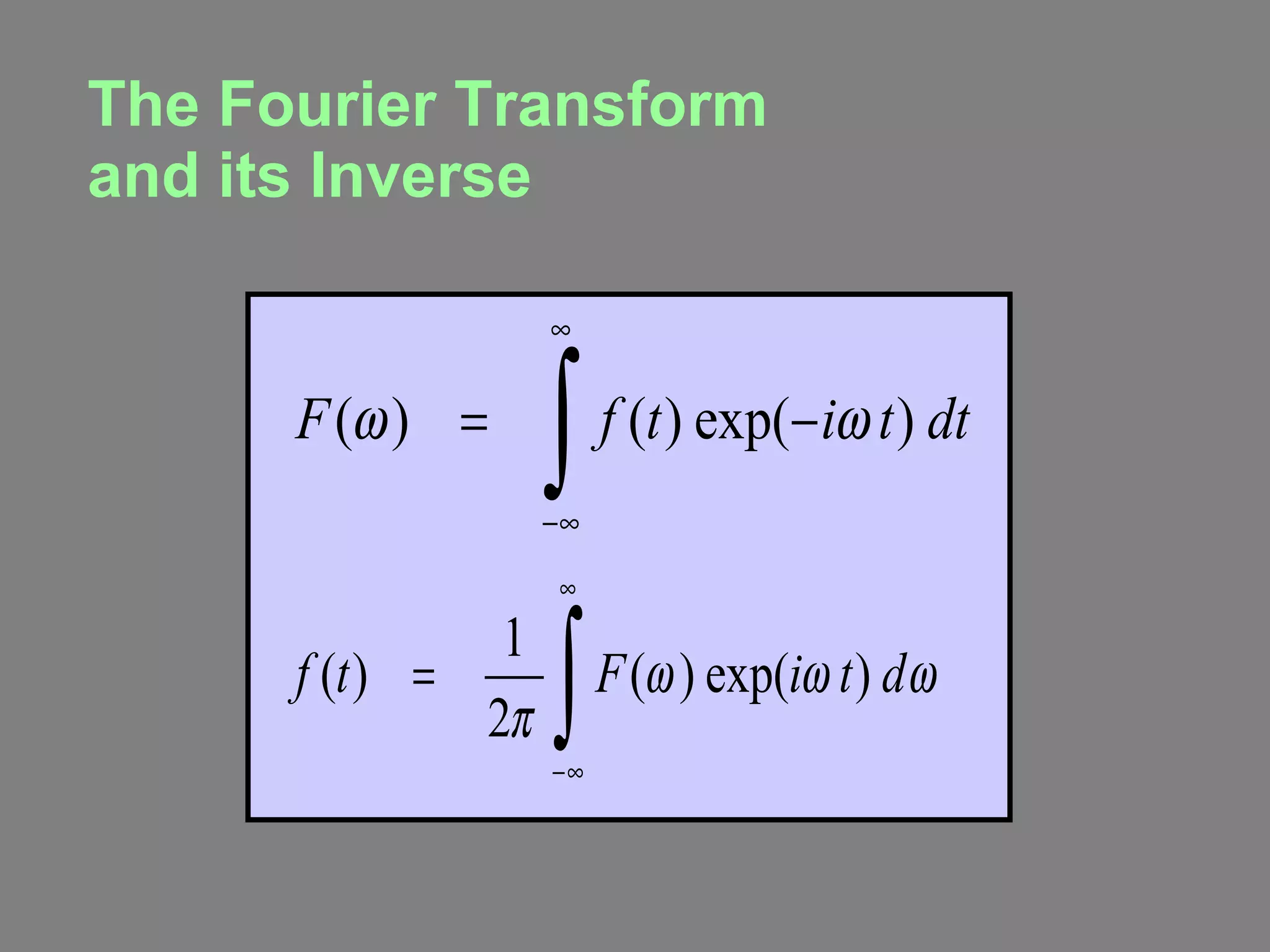
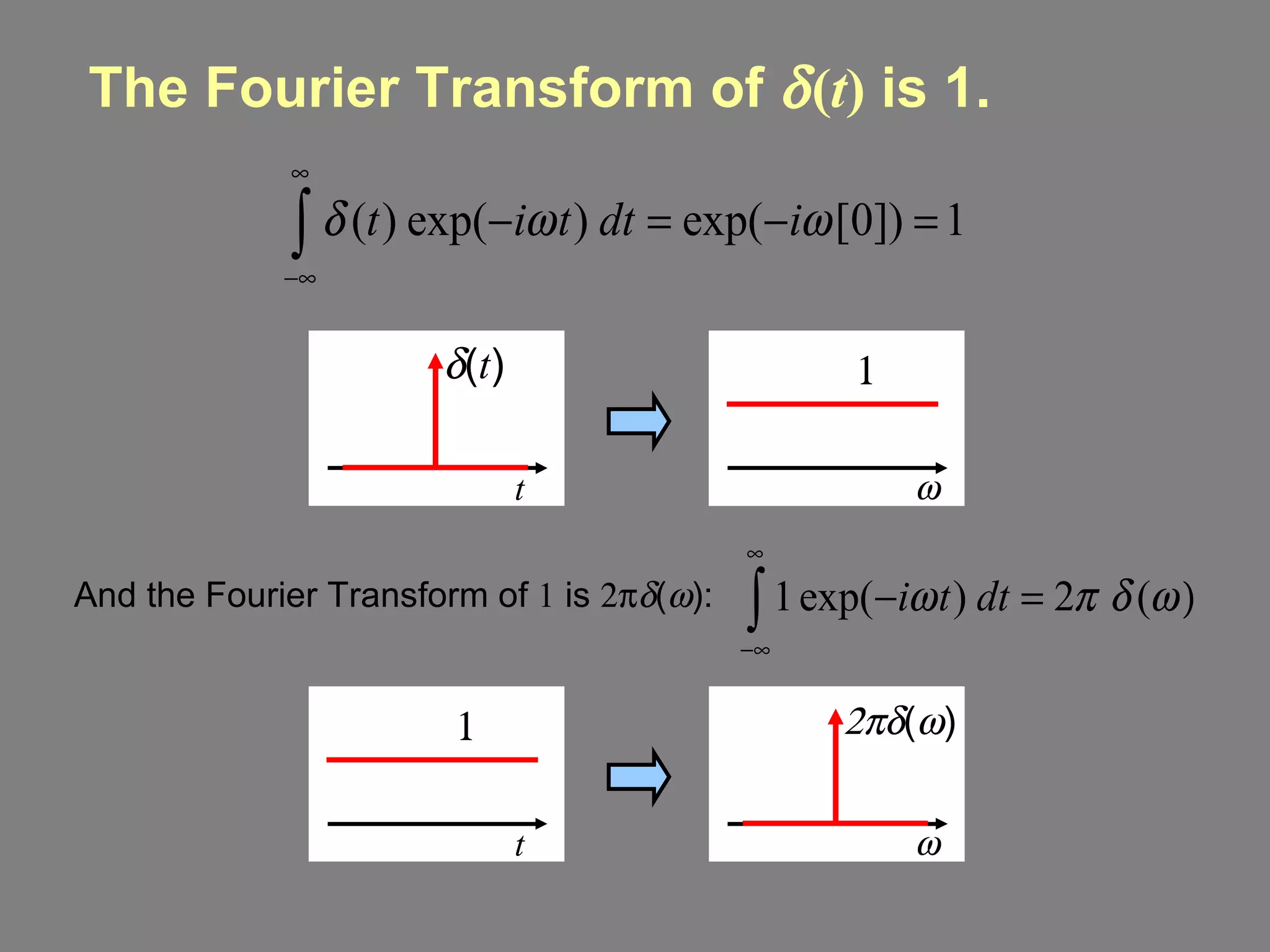
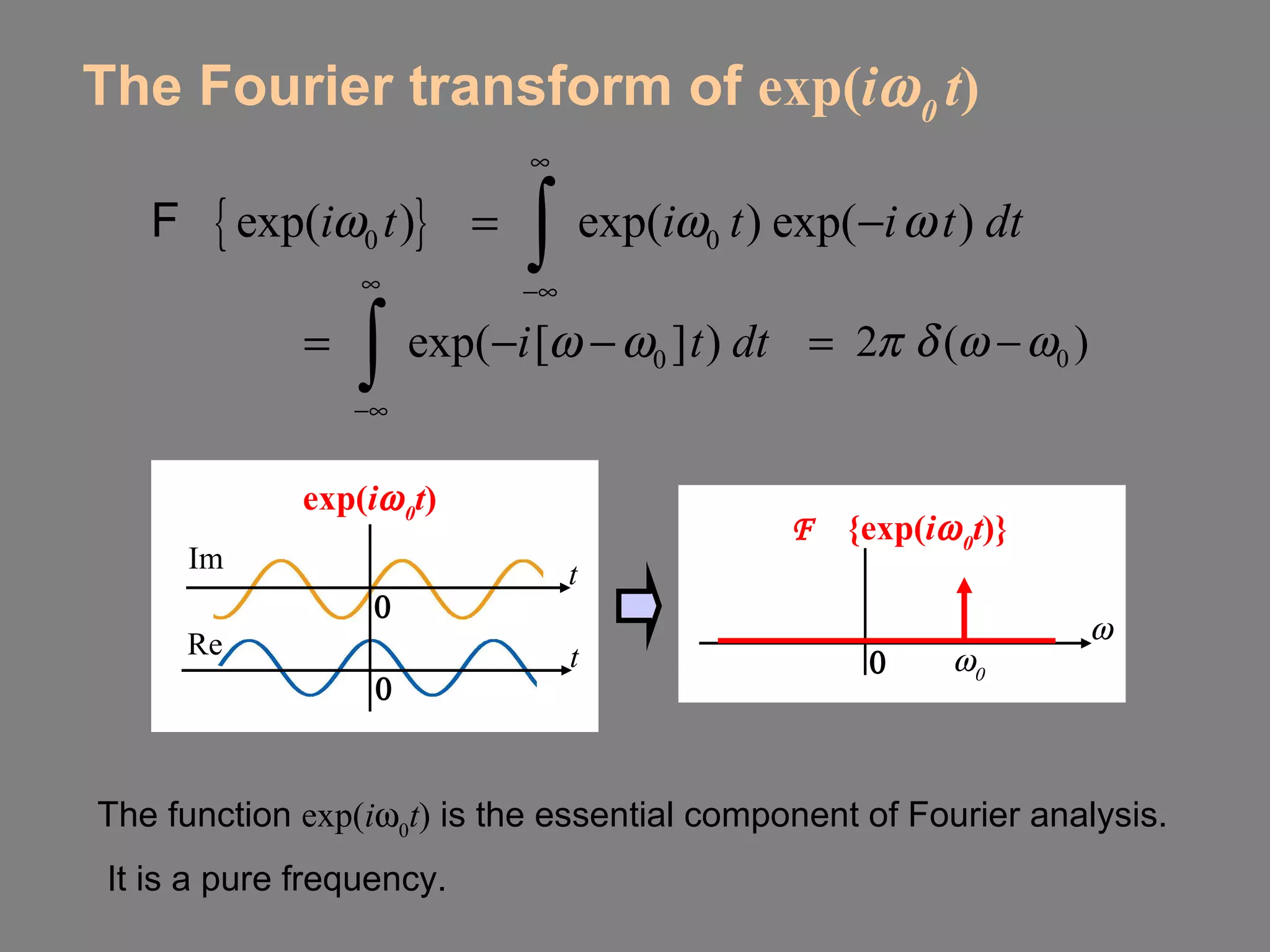
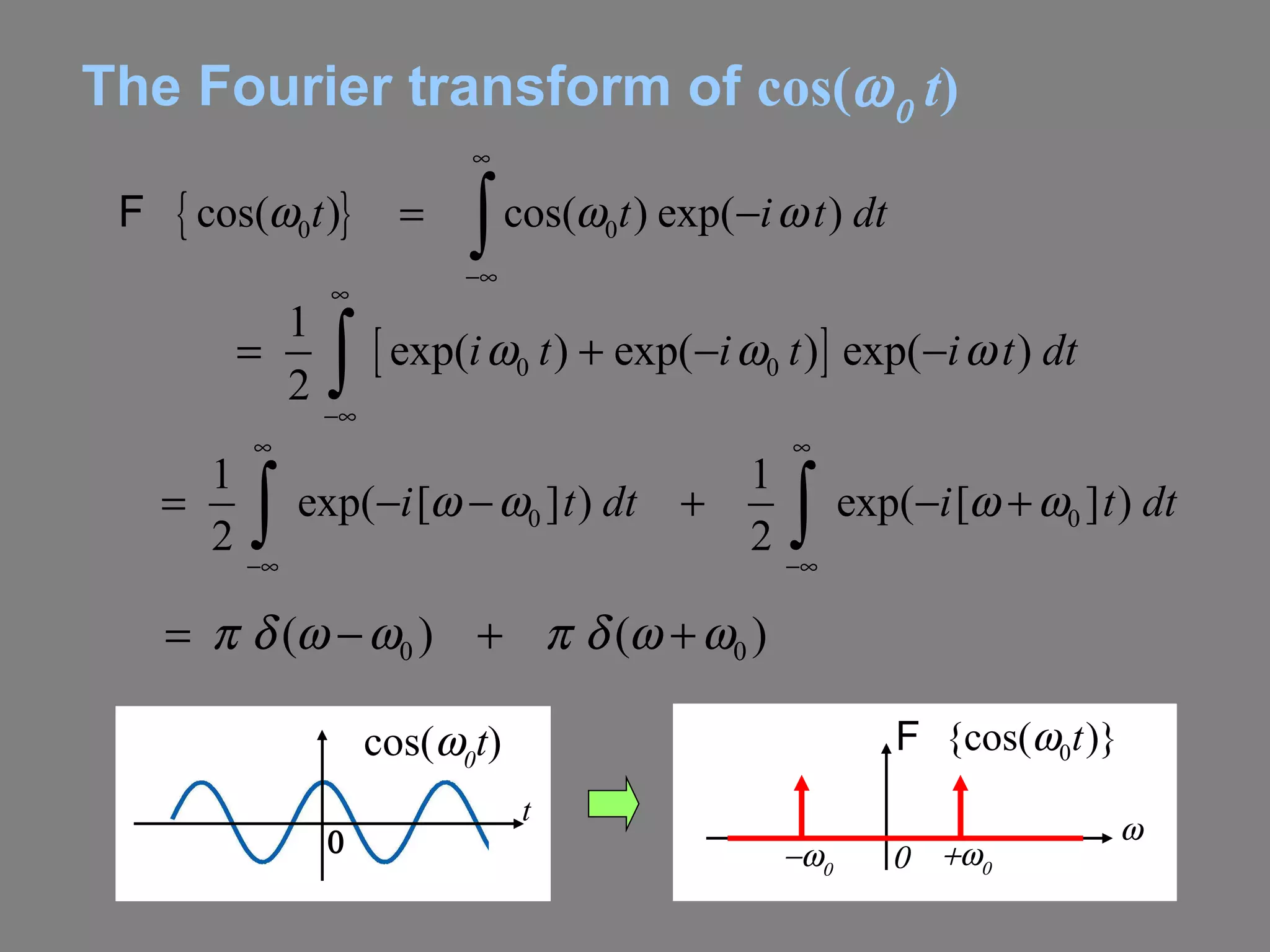
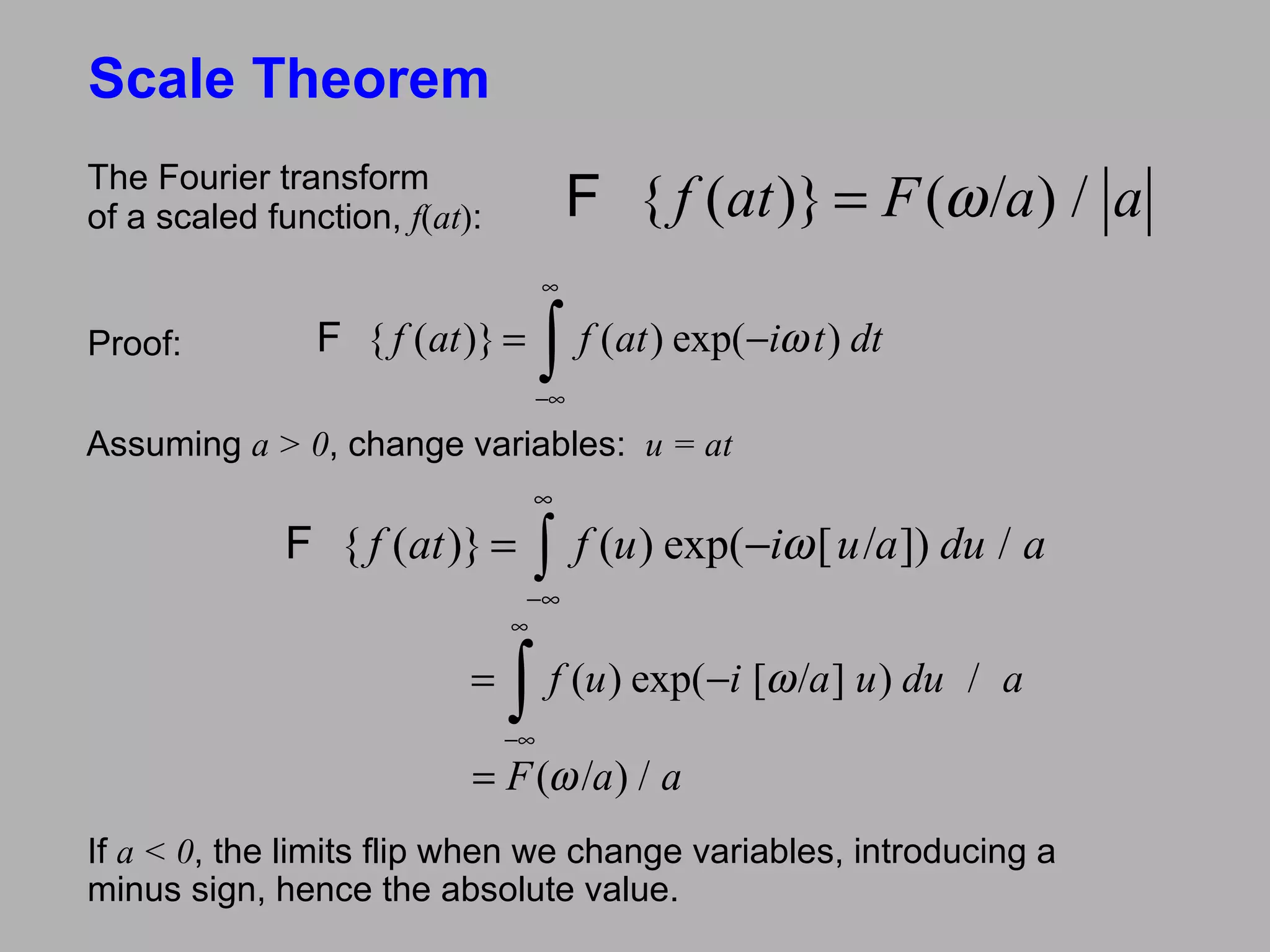
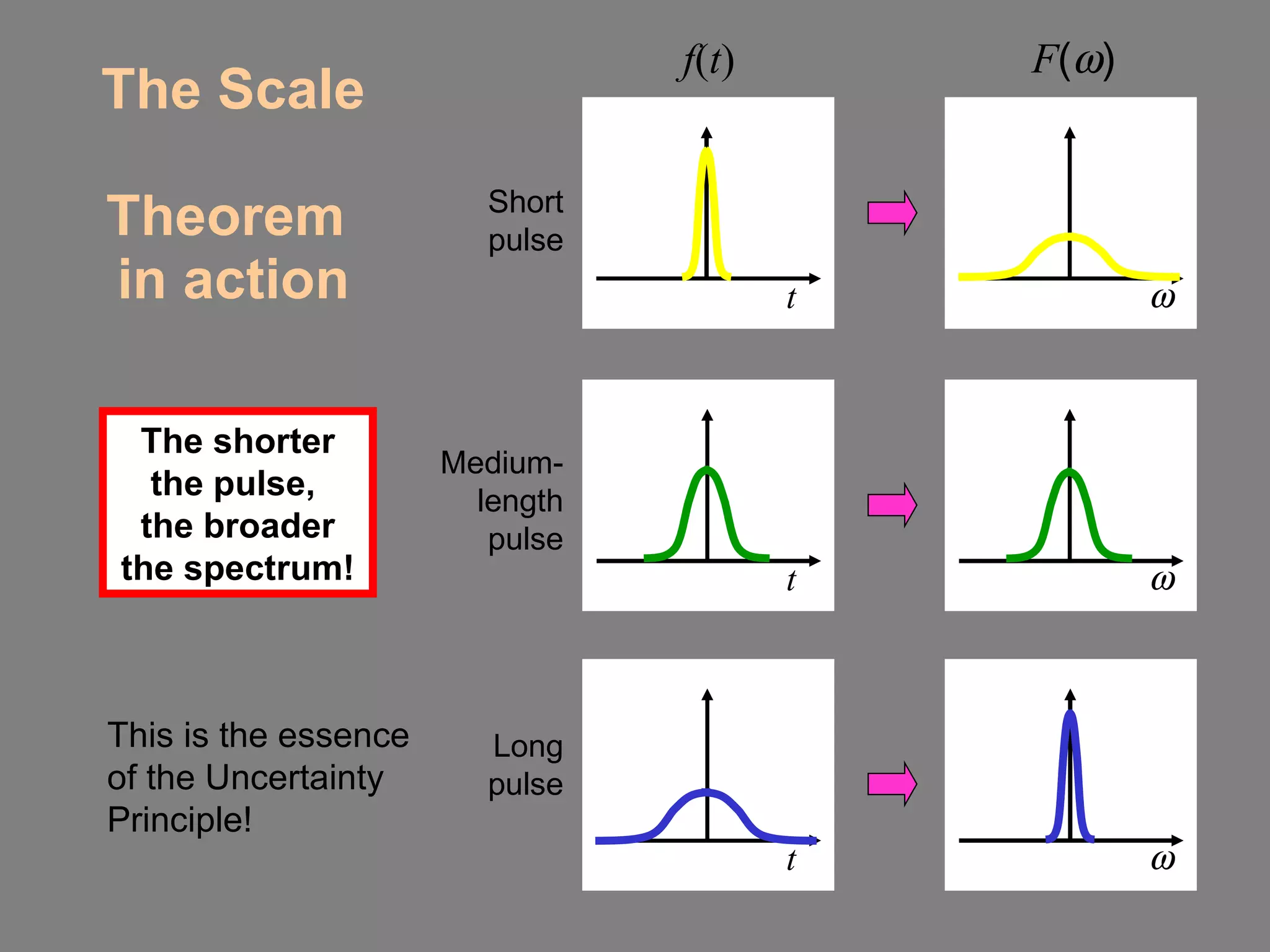
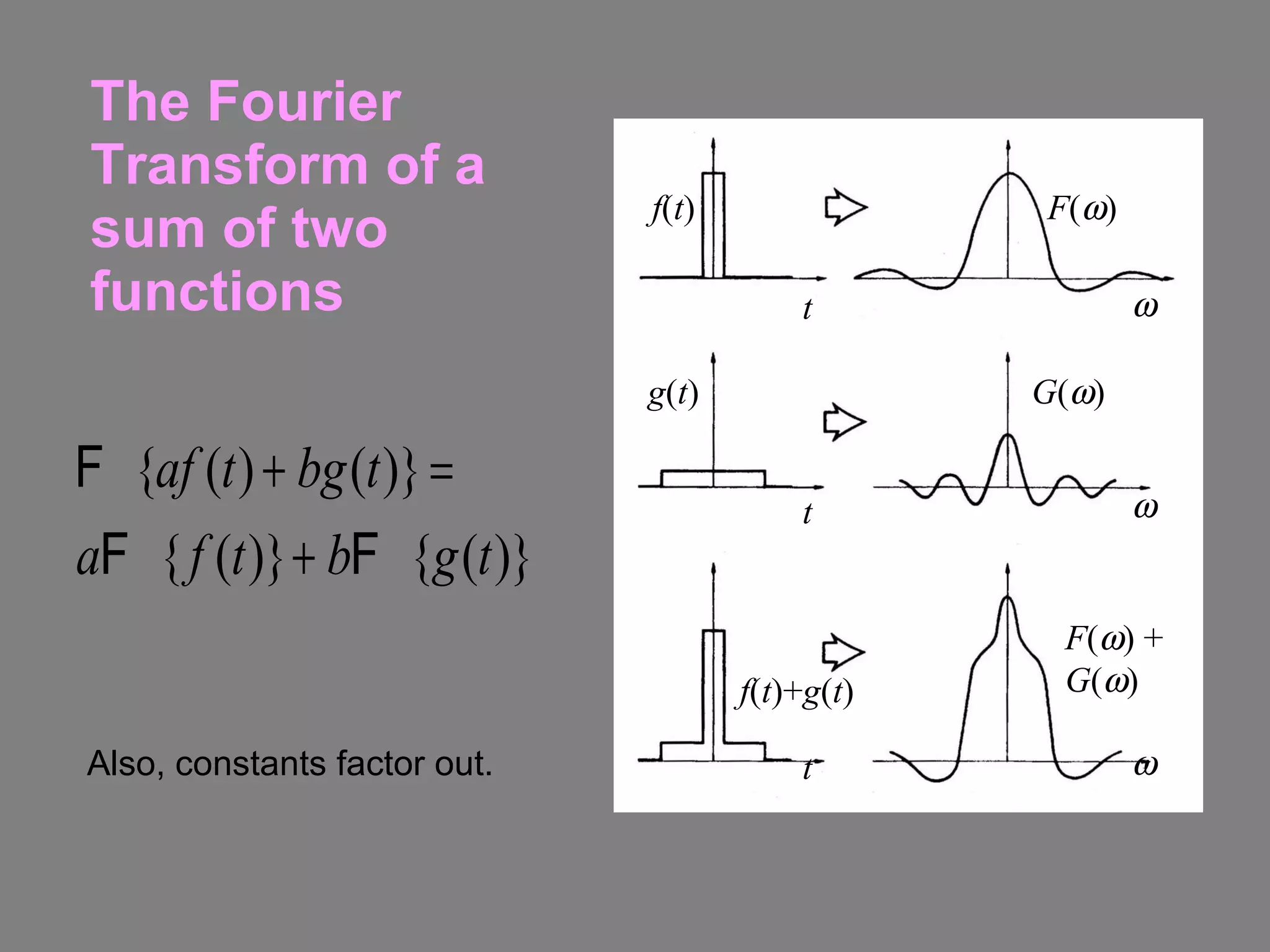
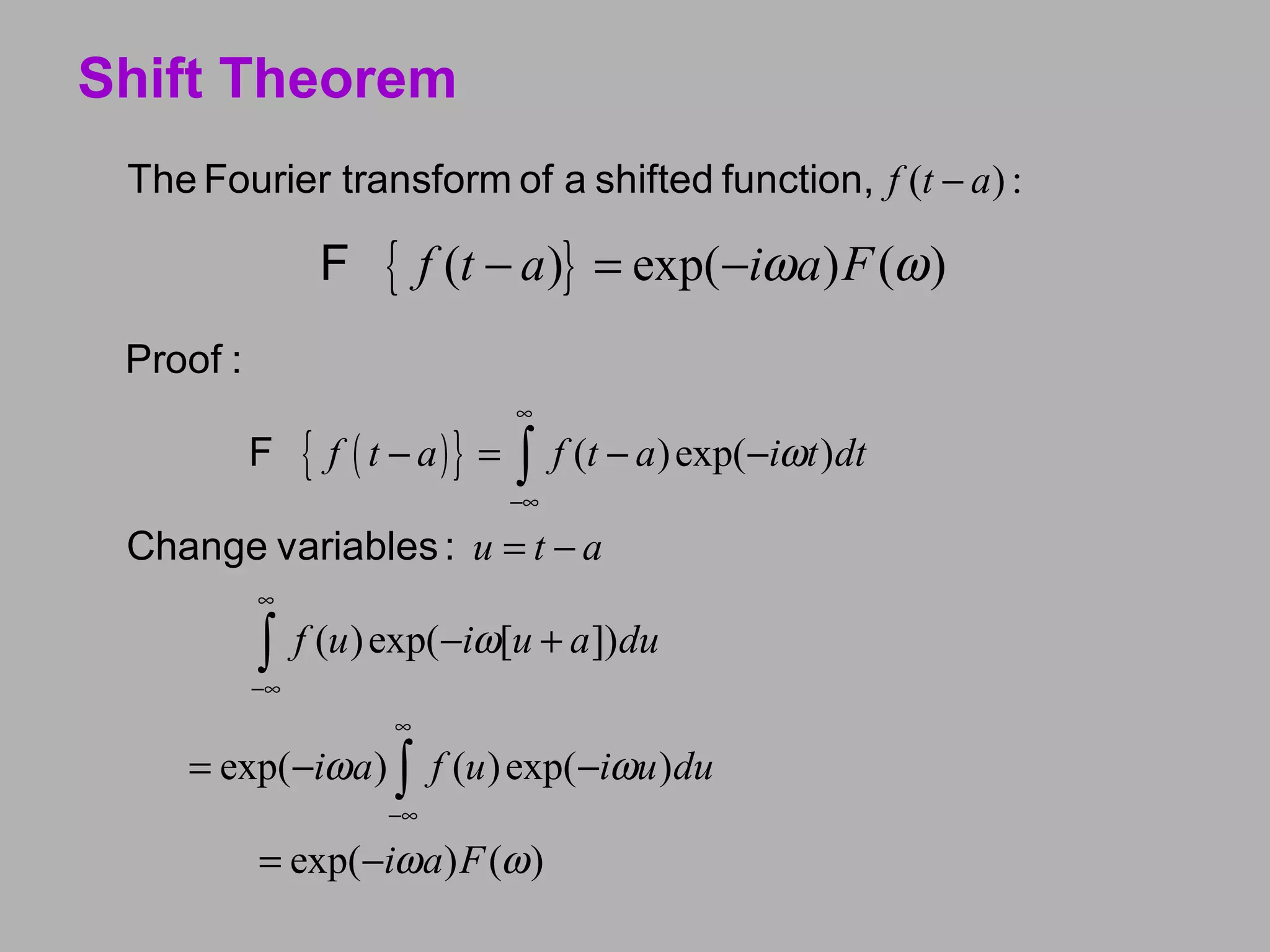
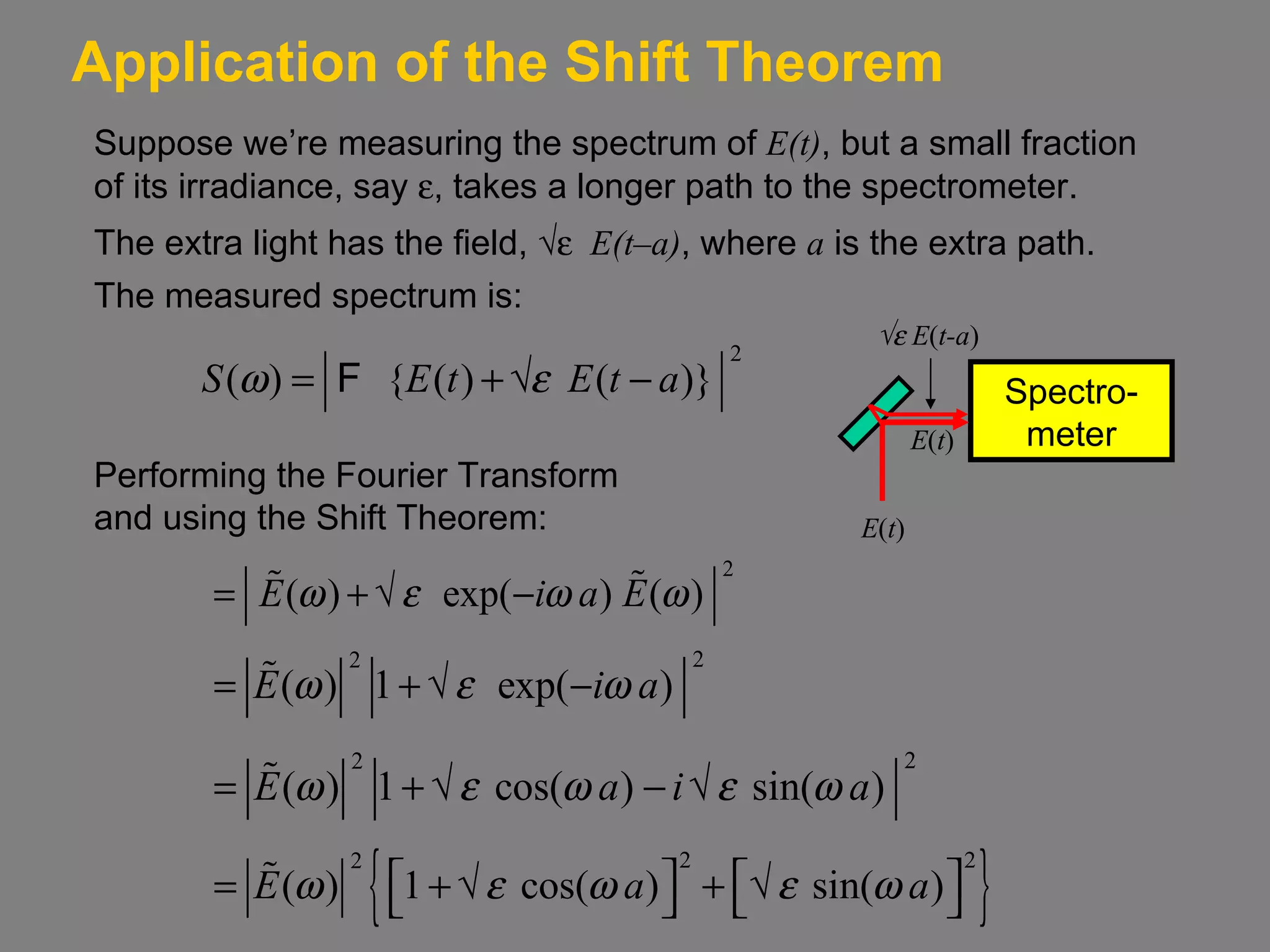
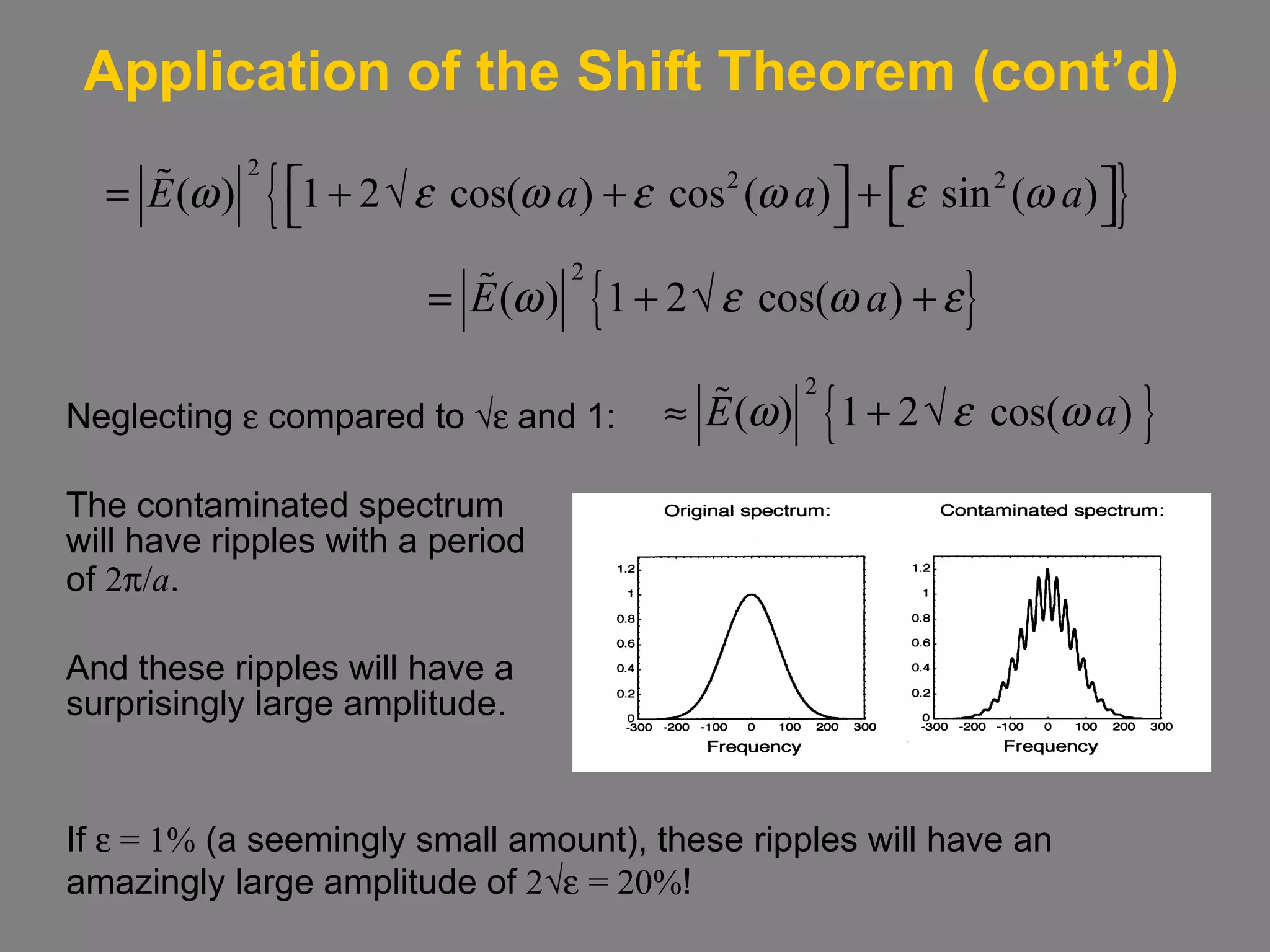
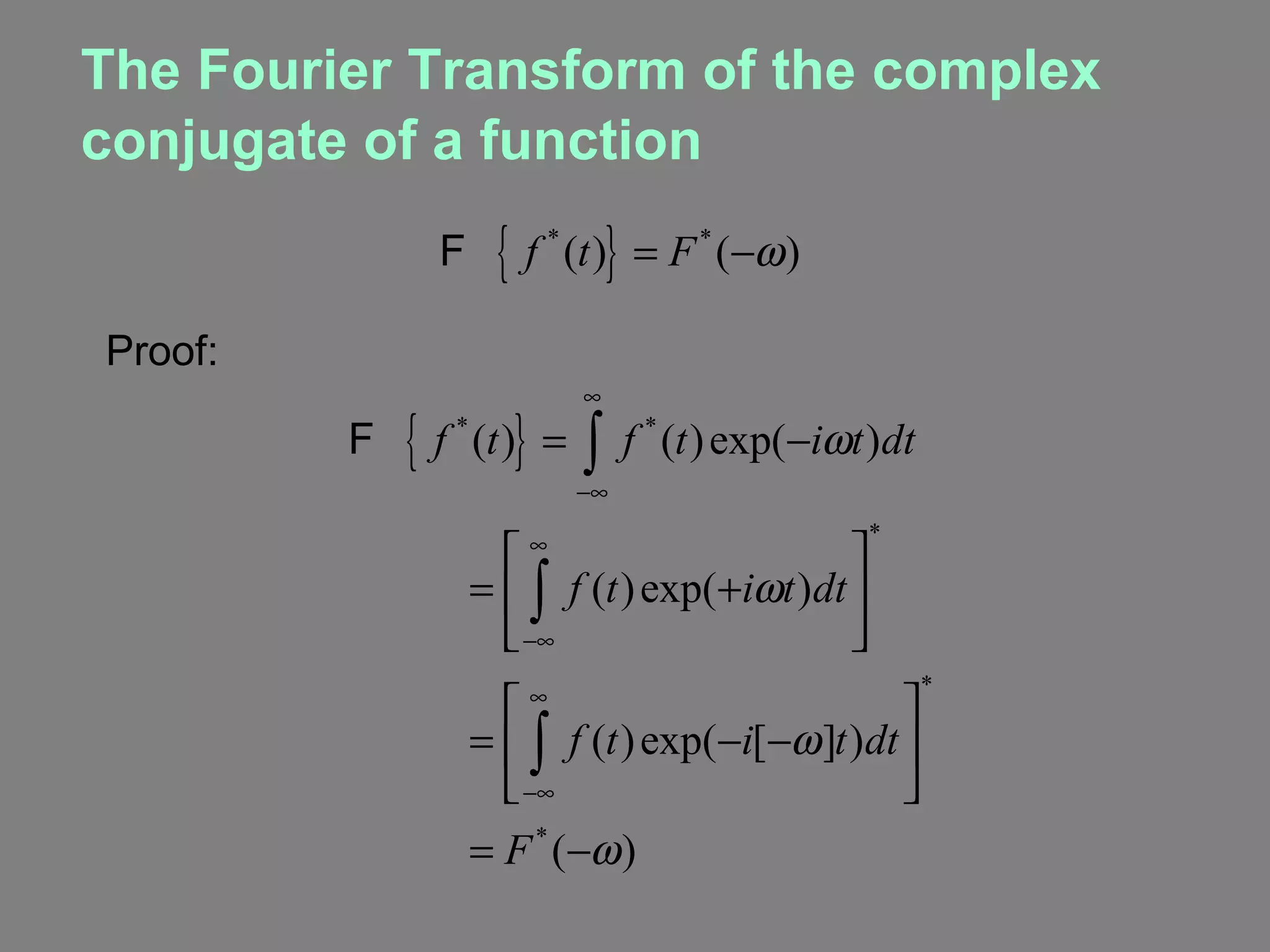
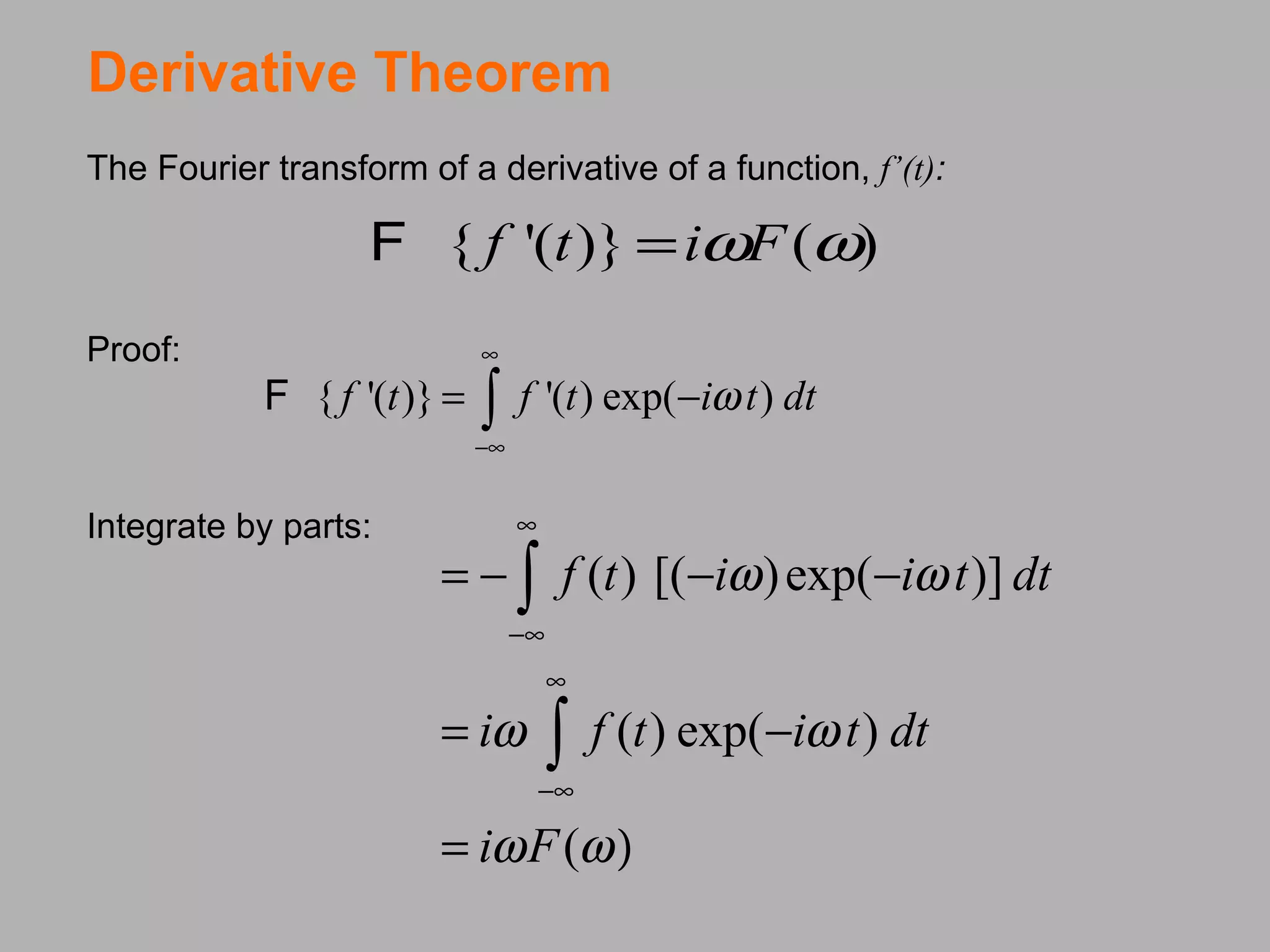
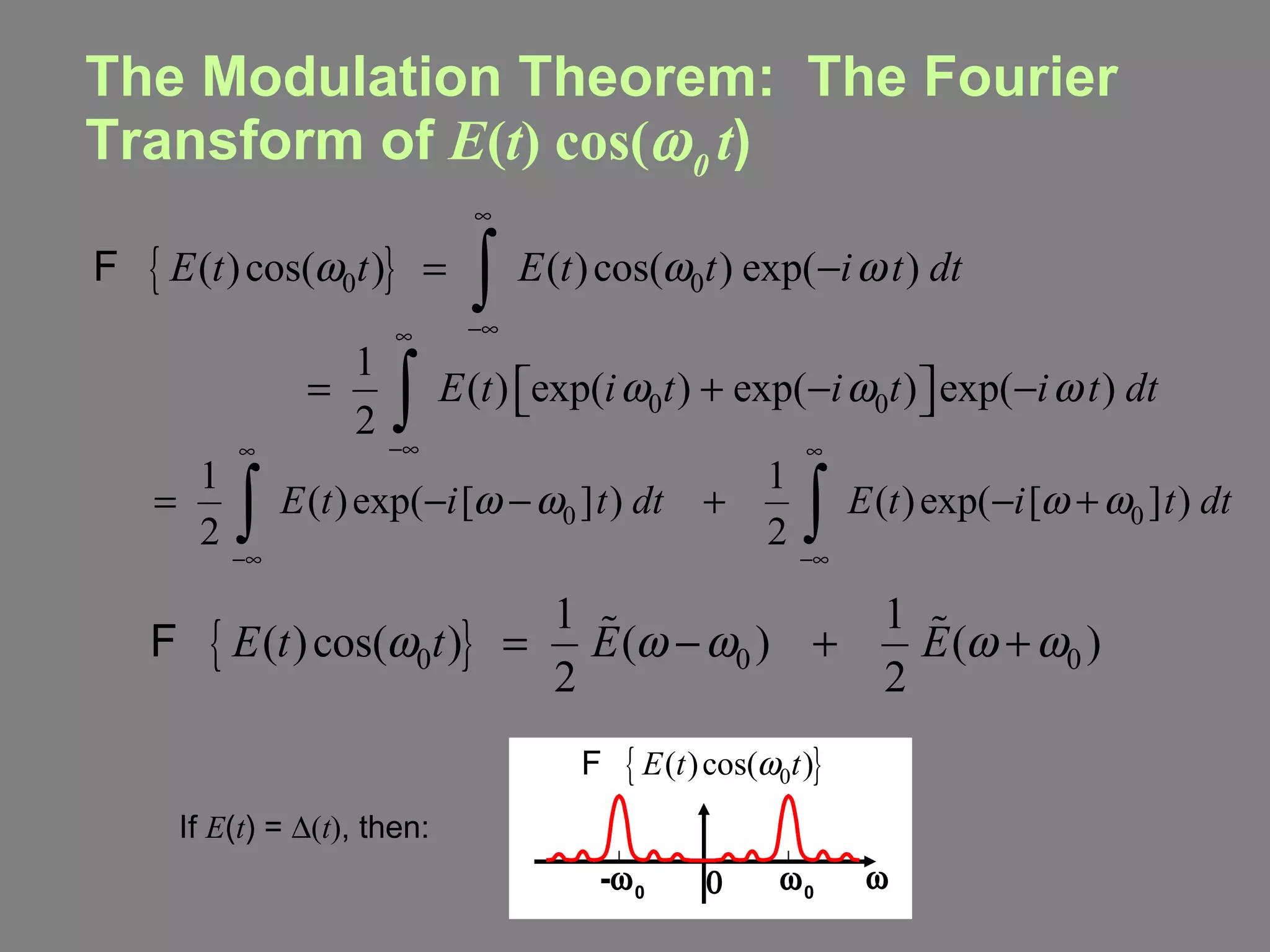
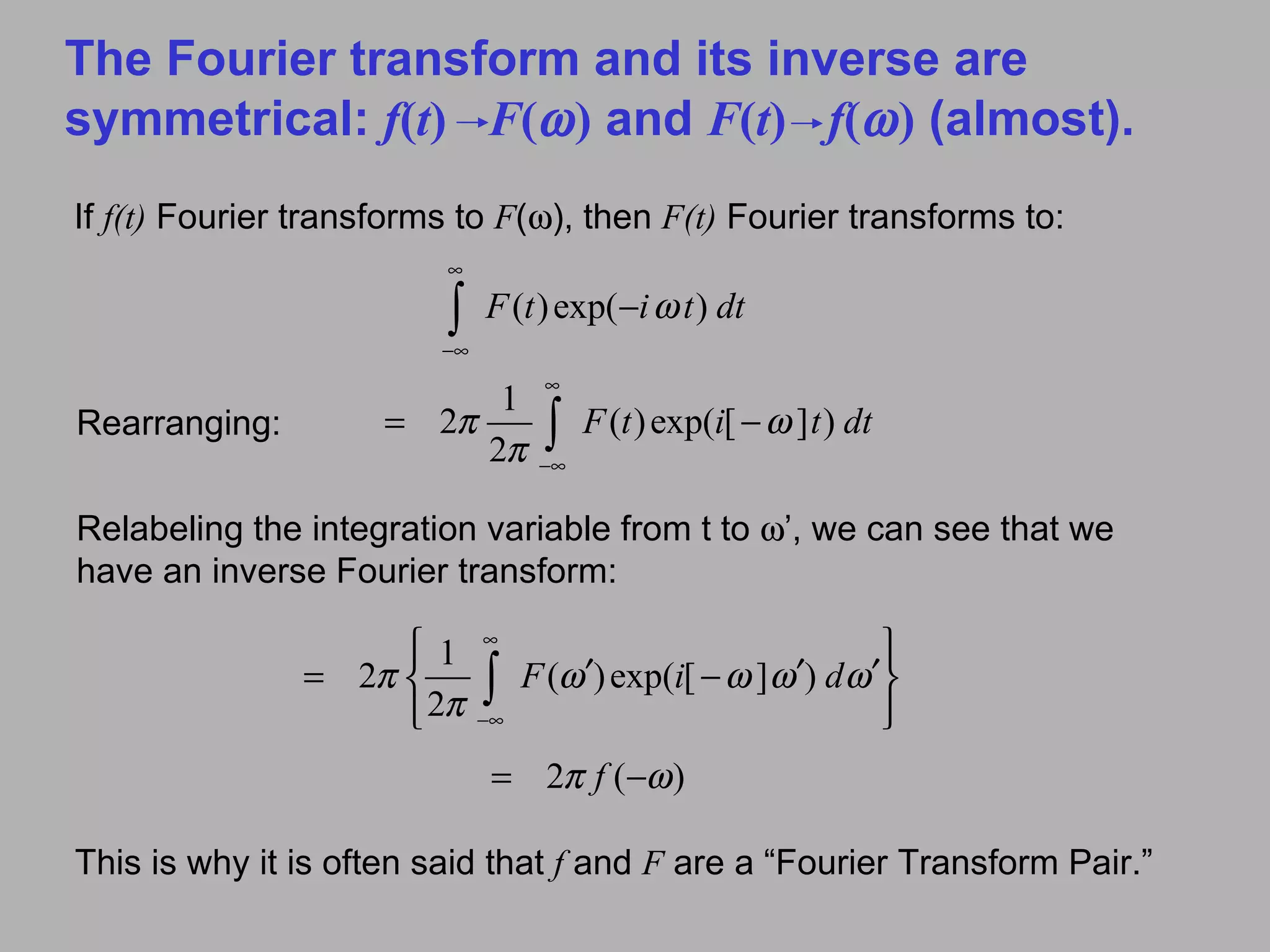
![Fourier Transform Magnitude and Phase As with any complex quantity, we can decompose f ( t ) and F ( ) into their magnitude and phase. f ( t ) can be written: f ( t ) = Mag { f ( t ) } exp[ - i Phase { f ( t )} ] where Mag { f ( t ) } 2 is often called the intensity, I ( t ) , and Phase { f ( t ) } is called the phase, ( t ) . They’re the same quantities we’re used to for light waves. Analogously, F ( ) = Mag { F ( ) } exp[ - i Phase { F ( ) } ] The Mag { F ( ) } 2 is called the spectrum, S ( ) , and the Phase { F ( ) } is called the spectral phase, ( ) . Just as both the intensity and phase are required to specify f ( t ) , both the spectrum and spectral phase are required to specify F ( ) , and hence f ( t ) .](https://image.slidesharecdn.com/opticsfouriertransformii-091126134936-phpapp01/75/Optics-Fourier-Transform-Ii-19-2048.jpg)
![Calculating the Intensity and the Phase It’s easy to go back and forth between the electric field and the intensity and phase. The intensity: (t) = -Im{ ln[ E (t) ] } The phase: Equivalently, (t i ) Re Im E(t i ) √ I(t i ) I(t) = |E(t)| 2](https://image.slidesharecdn.com/opticsfouriertransformii-091126134936-phpapp01/75/Optics-Fourier-Transform-Ii-20-2048.jpg)

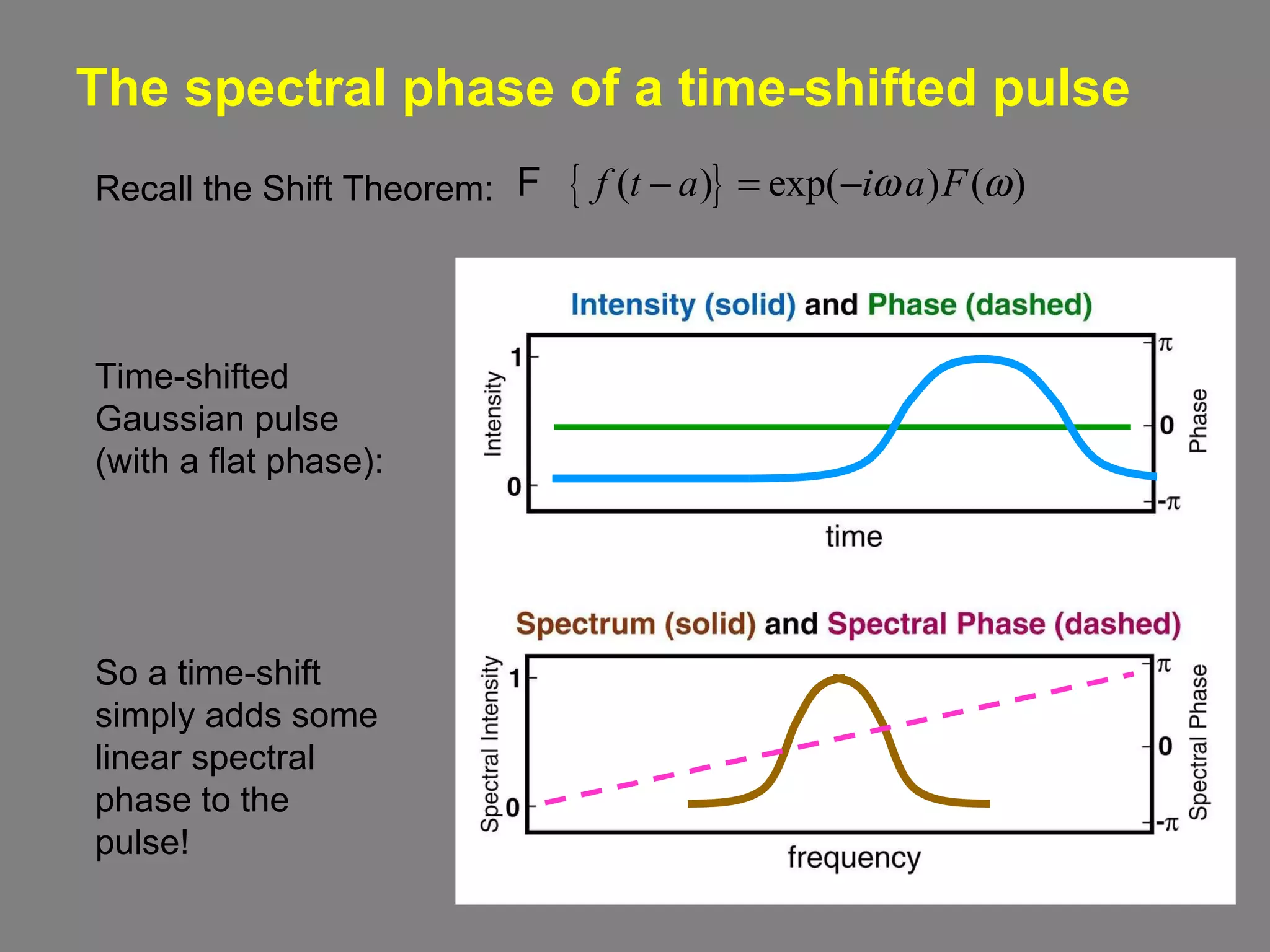
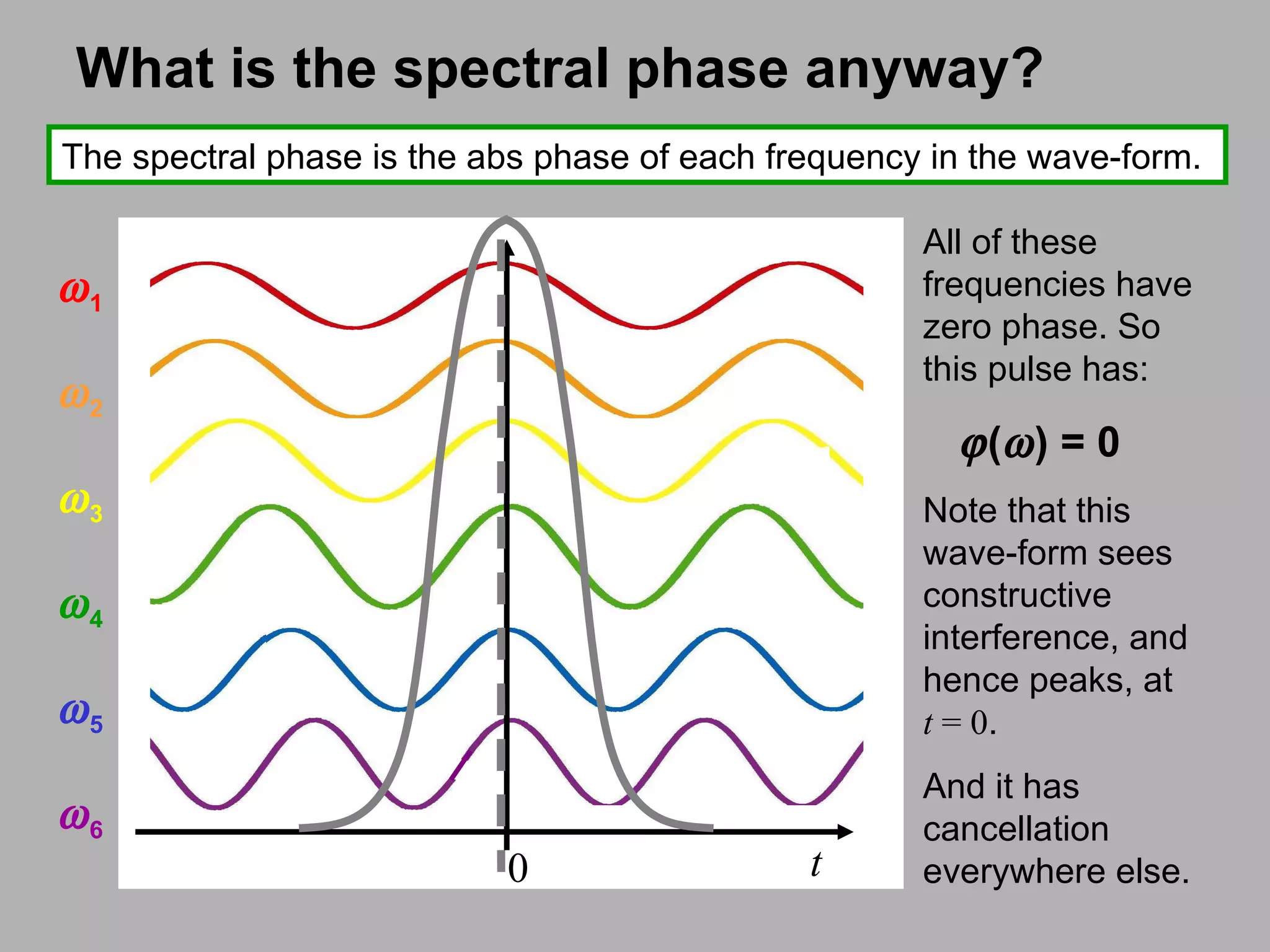
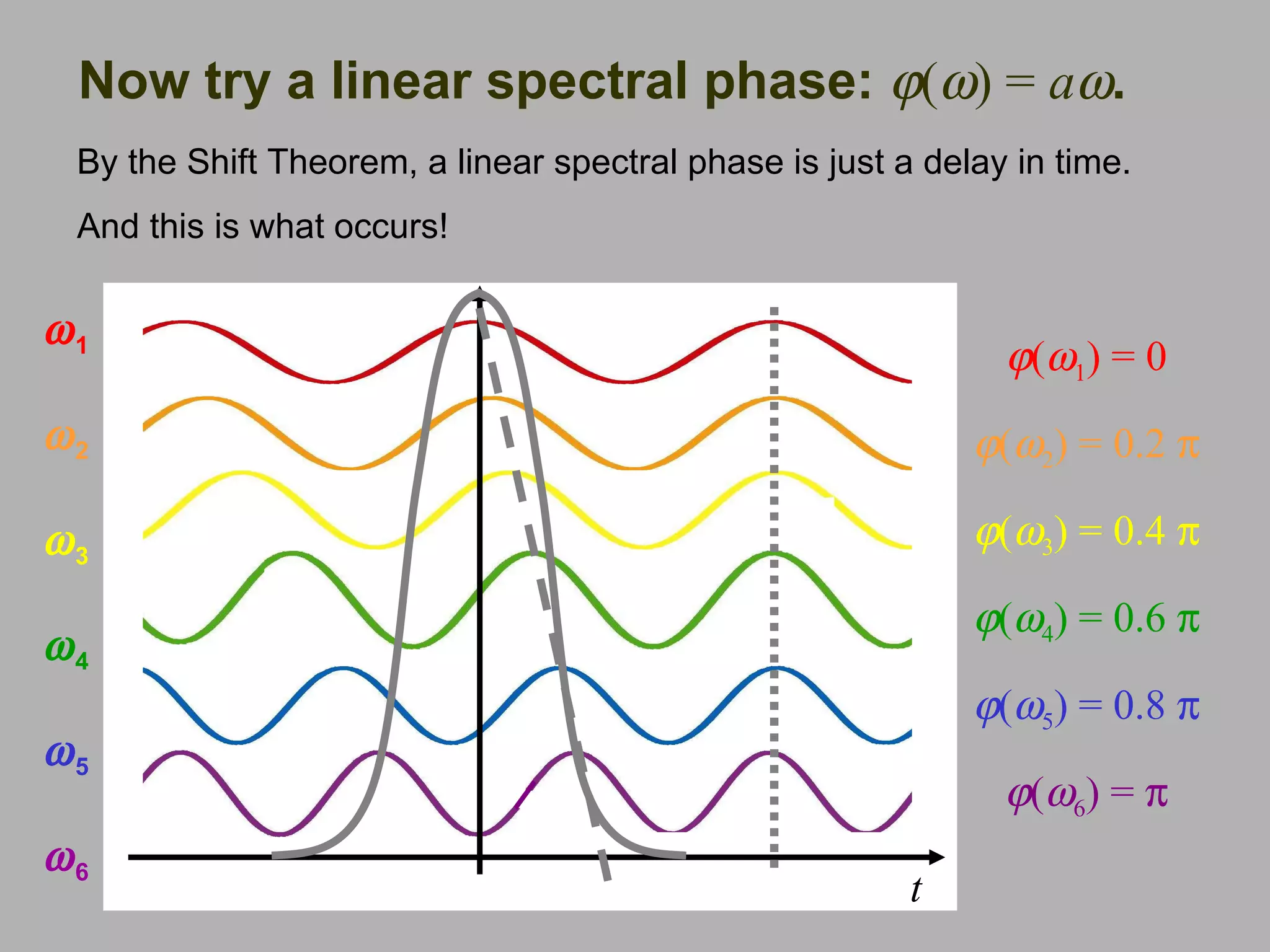
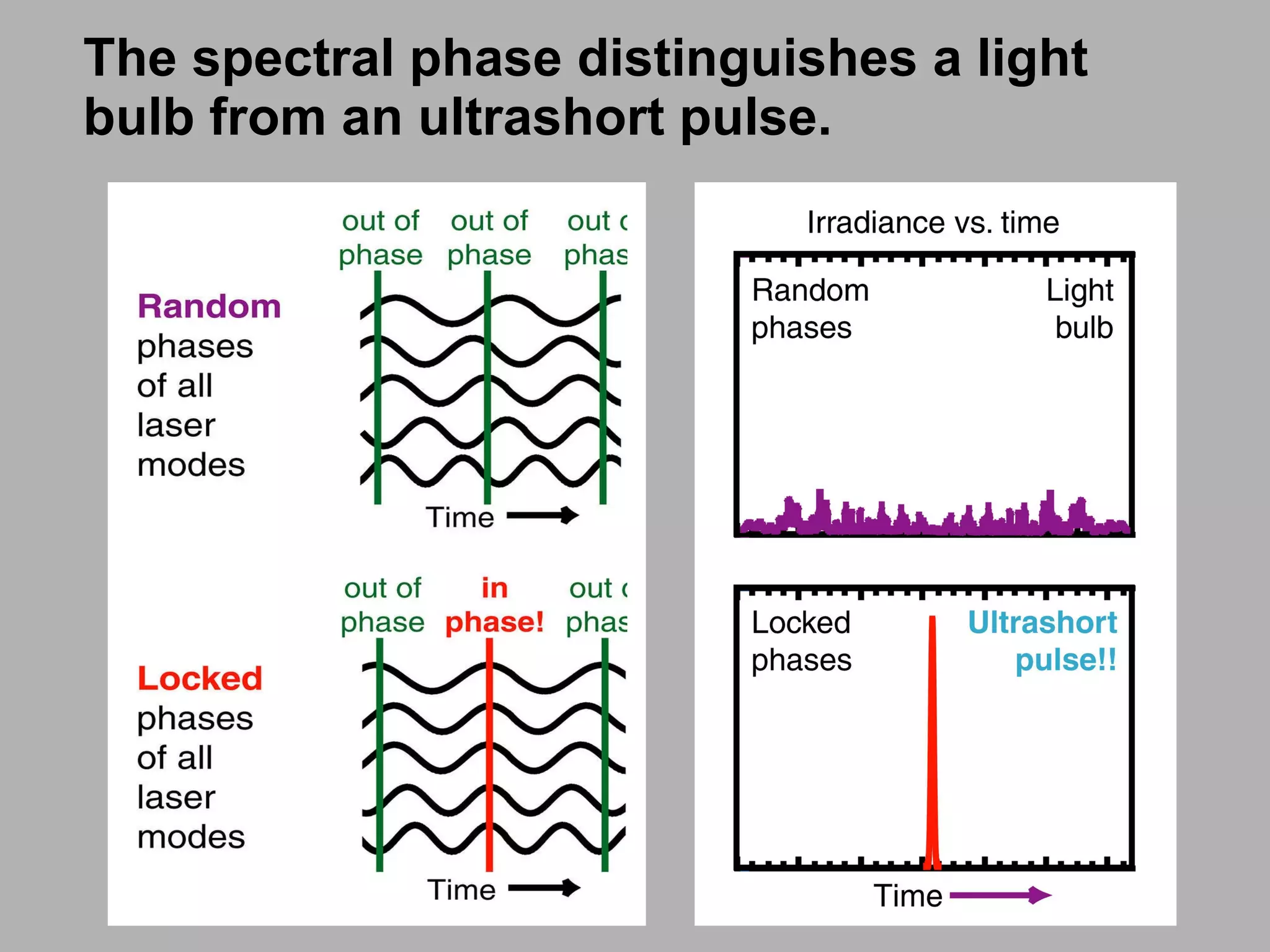
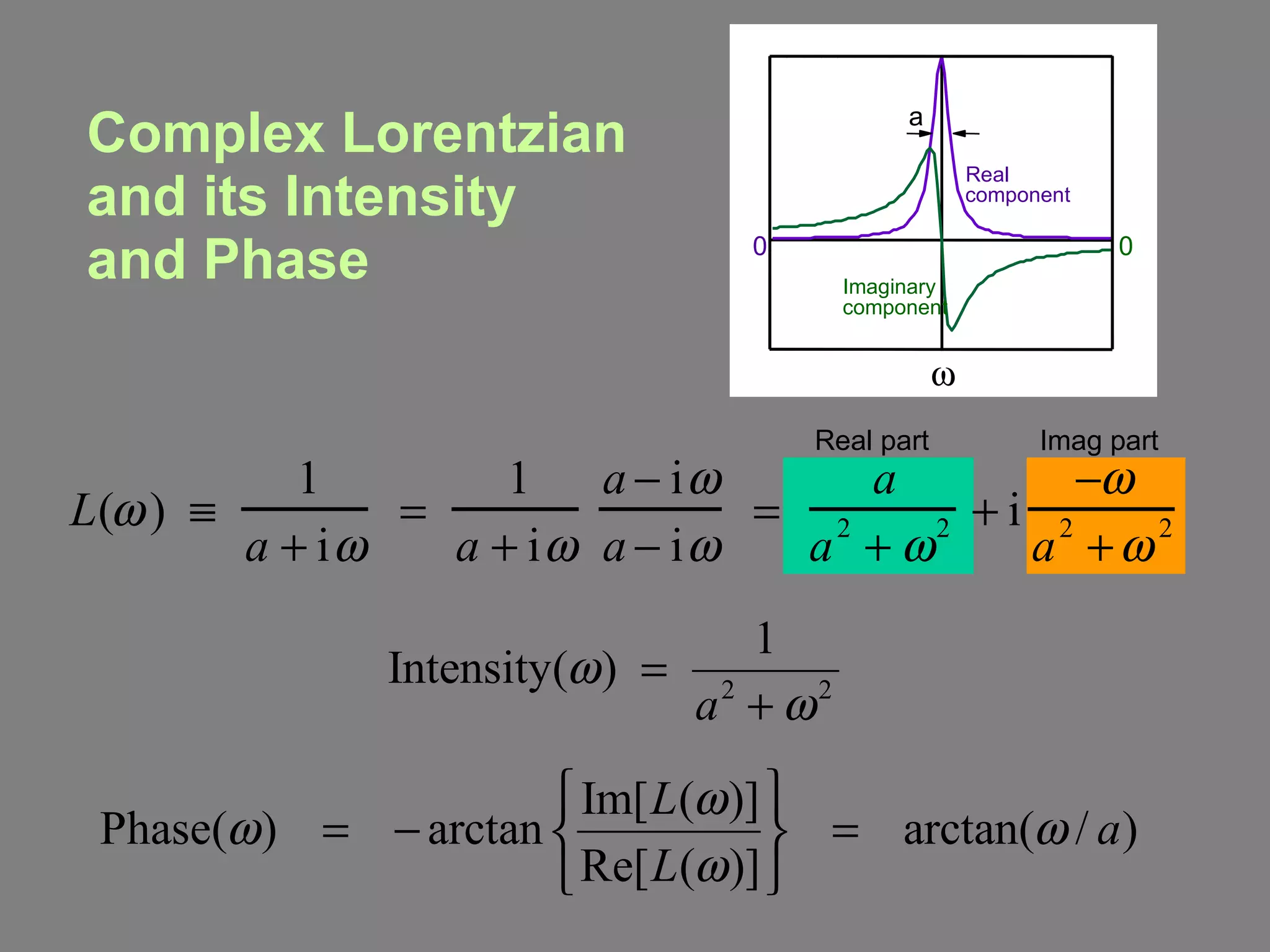
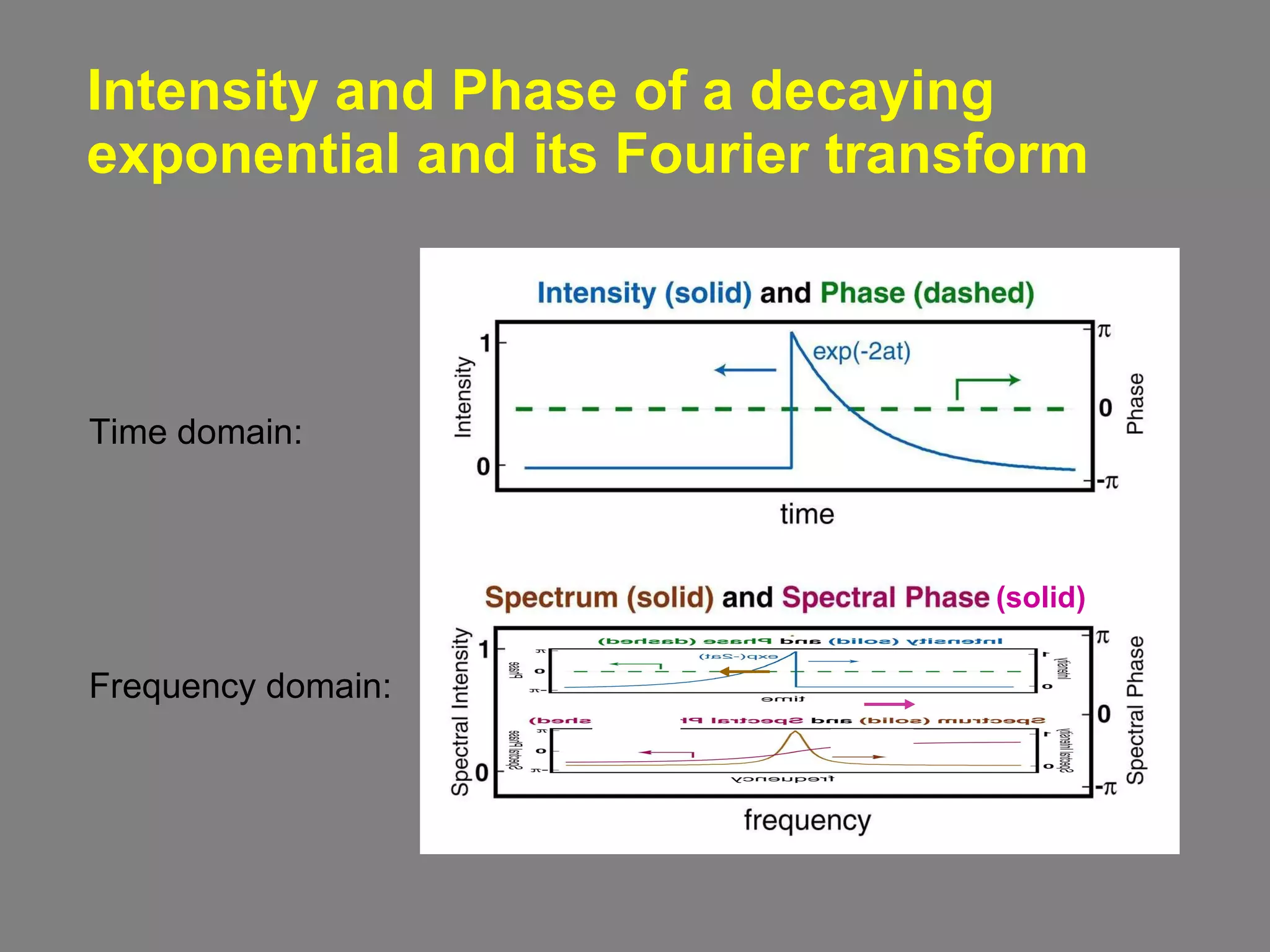
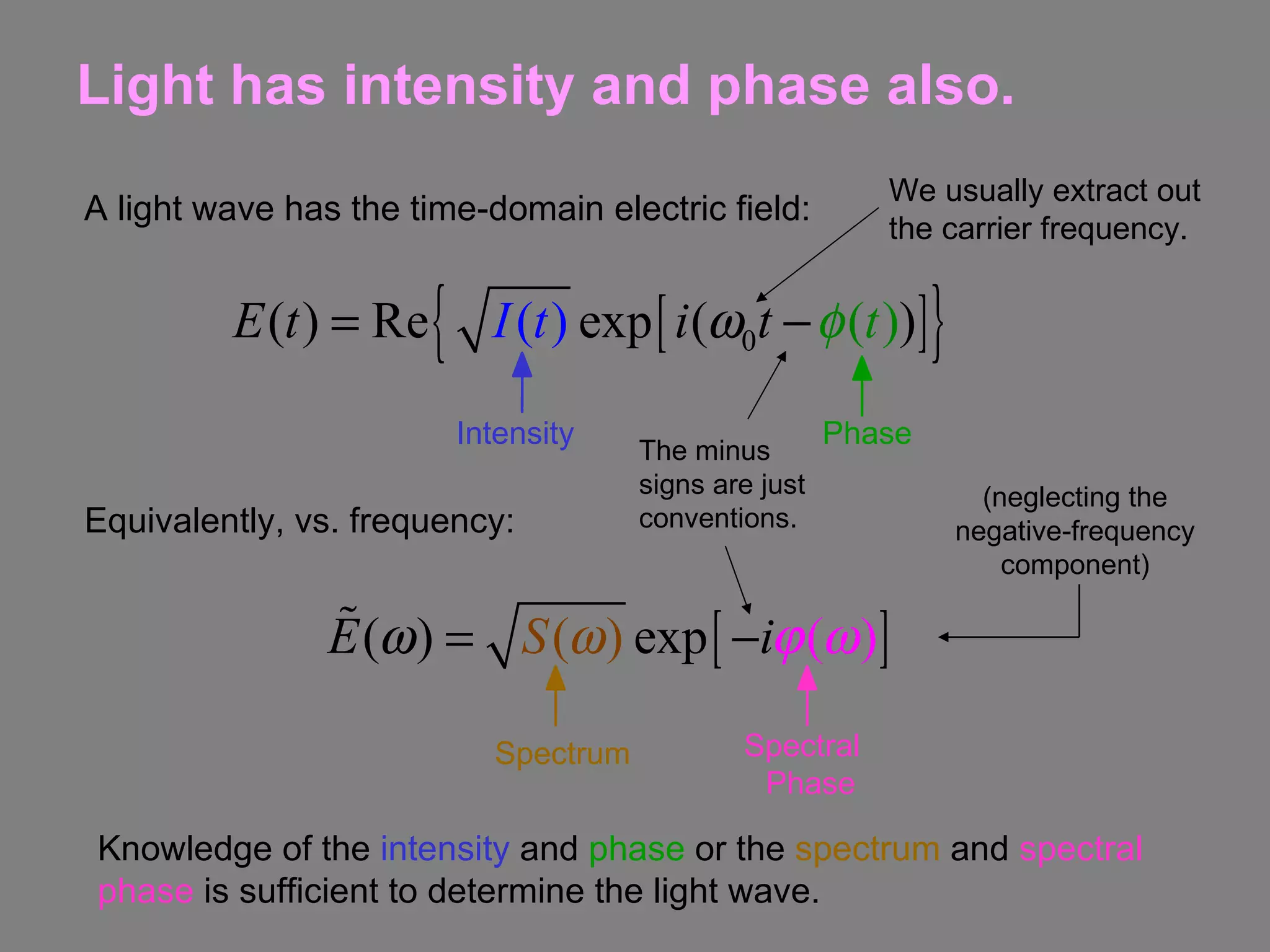
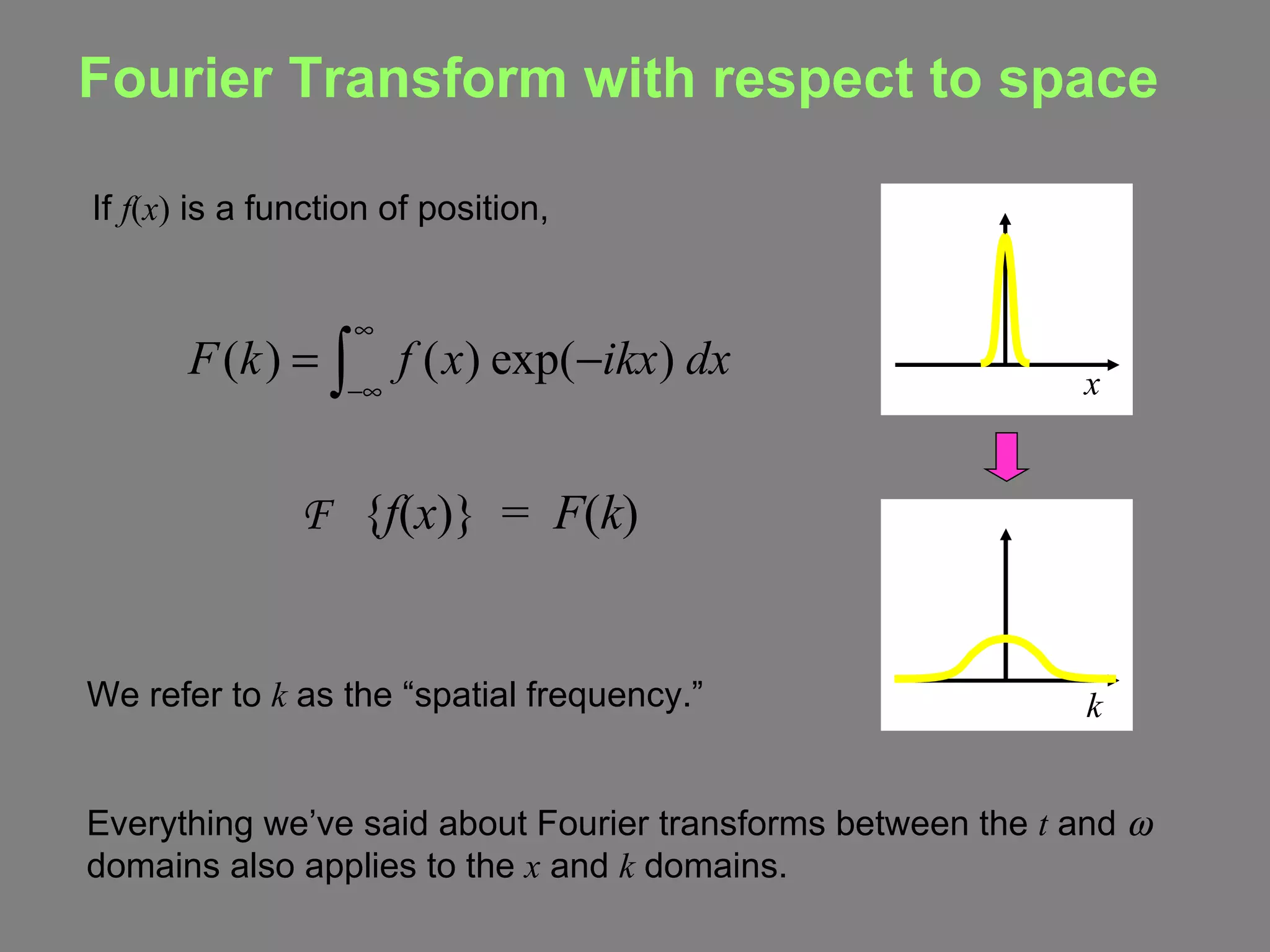
![The 2D Fourier Transform F (2) { f ( x,y )} = F ( k x ,k y ) = f ( x,y ) exp[- i ( k x x+k y y )] dx dy If f ( x,y ) = f x ( x ) f y ( y ) , then the 2D FT splits into two 1D FT's. But this doesn’t always happen. F (2) { f ( x,y )} x y f ( x,y )](https://image.slidesharecdn.com/opticsfouriertransformii-091126134936-phpapp01/75/Optics-Fourier-Transform-Ii-30-2048.jpg)
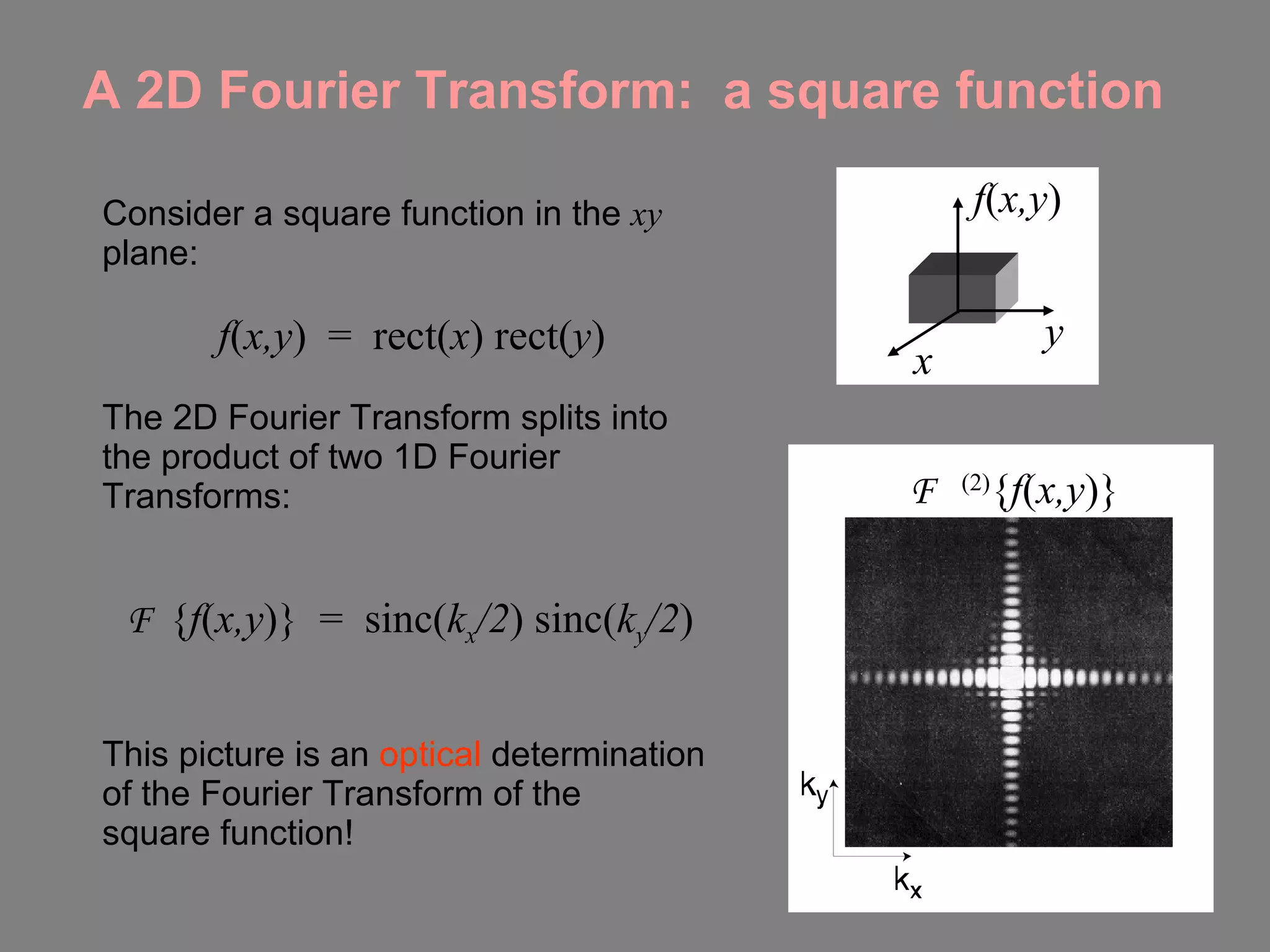
![Fourier Transform Magnitude and Phase Pictures reconstructed using the spectral phase of the other picture The phase of the Fourier transform (spectral phase) is much more important than the magnitude in reconstructing an image. Mag{ F [Linda]} Phase{ F [Rick]} Mag{ F [Rick]} Phase{ F {Linda]} Rick Linda](https://image.slidesharecdn.com/opticsfouriertransformii-091126134936-phpapp01/75/Optics-Fourier-Transform-Ii-32-2048.jpg)